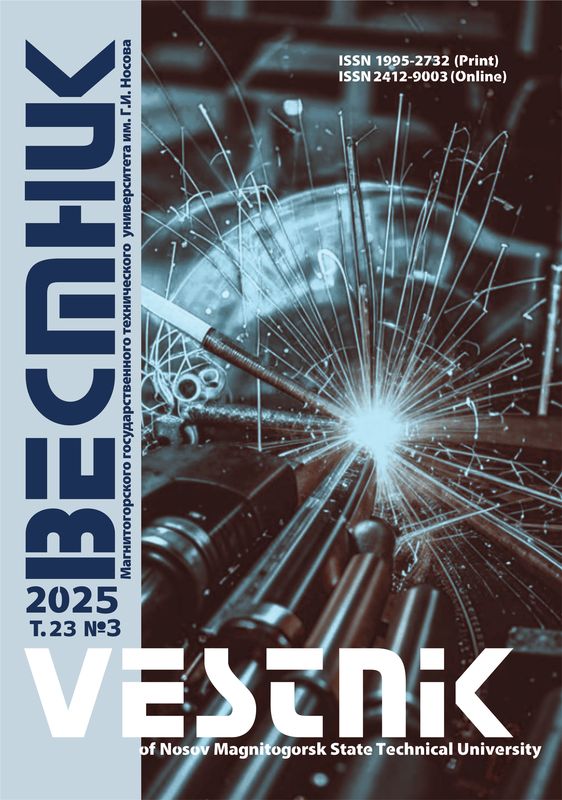Abstract
Problem Statement (Relevance): Mining deeper into a vein deposit means less yield (of commercial minerals) and more complicated geomechanics, or the dynamic manifestation of rock pressure, which leads to higher mining and transportation costs. The analysis of gold miners’ resources shows that large ore reserves would be left unmined as off-balance ores for the lack of cost effectiveness at the time of development. In view of the above the authors considered a number of options for mining the off-balance ores that were sealed in pillars or left unmined for low mineral levels or complicated geological conditions. Objectives: The study aims to develop a safe and efficient reworking process for off-balance gold vein deposits in a high rock pressure environment and to justify the efficient process parameters. Methods Applied: The study involved a variety of research methods including full-scale rock stress measurements, geomechanical modelling of stoping processes, engineering studies, statistical analysis, as well as a feasibility study. Originality: Some of the original findings of this study include the identified relationship between the concentration of commercial minerals in the mineralized rock and the distance to the quartz vein; the mathematical relationships between the mining capacity of re-development mineralized rock and the key parameters. Findings: The proposed mining options for the mineralized rock of the Kochkarskoye deposit can significantly expand the resource base, and the adoption of high-performance mining systems will enhance the safety of operations due to a reduced share of manual labor involved and through reduced stresses of the surrounding rock. Re-use of existing mines will reduce the preparatory development scope by 30-45% and provide a 3 to 5-fold increase in the rate of development. Practical Relevance: The study resulted in the development and implementation of a number of options for mineral re-development and in the identification of optimal parameters ensuring both efficiency and safety.
Keywords
Stress-strain state, concentration of commercial minerals, development system, re-development, performance indicators.
1. Federal rules and regulations in the area of industrial safety: Regulations on safety when mining deposits characterized with rock bump hazards. Registered by the Ministry of Justice of Russia 04.04.2014 N 31822. (In Russ.)
2. Mineral resources of Russia. Economics and Management. Special edition. Moscow: Geoinformmark, 2007. (In Russ.)
3. Recommendations on assessment of rock bump hazards of certain areas of the Kochkarskoye deposit using the analogy method. Frunze, 1990. (In Russ.)
4. Vlokh N.P., Zubkov A.V., Feklistov Yu.G. Improved slicing method. Diagnostika napryazhennogo sostoyaniya porodnykh massivov: sbornik nauchnykh trudov [Detecting stresses in rock massifs: Research papers]. Novosibirsk, 1980, pp. 30-35. (In Russ.)
5. Abramov N.N., Saykov S.A., Ardashkin V.A. Methodological aspects of analyzing the state of rock around the underground workings using a set of geophysical methods. Kontrol’ sostoyaniya skal’nogo massiva pri dolgovremennoy ekspluatatsii krupnogabaritnykh podzemnykh sooruzhenii [Monitoring the status of the rock mass during a long-term operation of large underground structures]. Apatity, 1993, pp. 30-41. (In Russ.)
6. Anderson O.L., Grew P.S. Stress-Corros i on the Theory of Crack Propagation with Application to Geophisics. Rev. Geophys. Space Phys. Vol.15, pp. 77-104, 1977.
7. Gzovsky M.V., Turchaninov I.A., Markov G.A. et al. The stress state of the Earth crust defined based on the underground survey and tectonophysical analysis data. Napryazhennoye sostoyanie zemnoy kory [The stress state of the Earth crust]. Moscow: Nauka, 1973. (In Russ.)
8. Zoteev O.V. Guidelines on the use of the FEMP software. Ekaterinburg: URSMU, 2001. (In Russ.)
9. Borshch-Komponietc V.I. et al. Sposob povtornoy razrabotki zalezhey [A method of reworking]: Cert. of Authorship 1454970. (In Russ.)
10. Gavrishev S.E., Burmistrov K.V., Kornilov S.N., Tomilina N.G. Evaluation of transportation flow charts with open-pit hoisting systems in open pit/underground mining. Gornyi Zhurnal [Mining Journal]. 2016, no. 5, pp. 41-47.
11. Pikalov V.A., Sokolovsky A.V., Vasilets V.N., Burmistrov K.V. Substantiation of efficient parameters for hybrid open pit/underground mining of coal. Gornyi Zhurnal [Mining Journal]. 2016, no. 1, pp. 67-72.
12. Baranov А.О. Designing process flows and processes for underground ore mining: A Reference Guide. Moscow: Nedra, 1993, 283 p. (In Russ.)
13. Vetrov S.V. Allowable outcropping in underground ore mining. Moscow: Nauka, 1975, 232 p. (In Russ.)
14. Meshcheryakov E.Yu., Valeev А.S., Allaberdin A.B. Substantiation of the combined filling mass parameters in upward mining. Vestnik Magnitogorskogo gosudarstvennogo tekhnicheskogo universiteta im. G.I. Nosova [Vestnik of Nosov Magnitogorsk State Technical University]. 2014, no. 4, pp. 10-13. (In Russ.)












